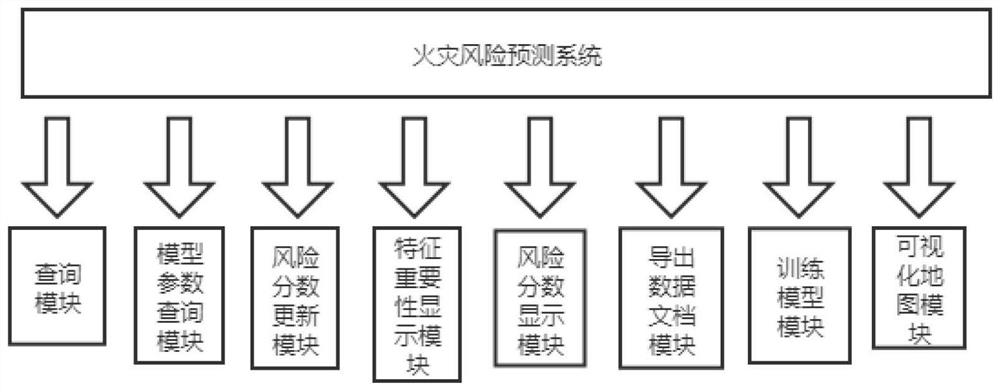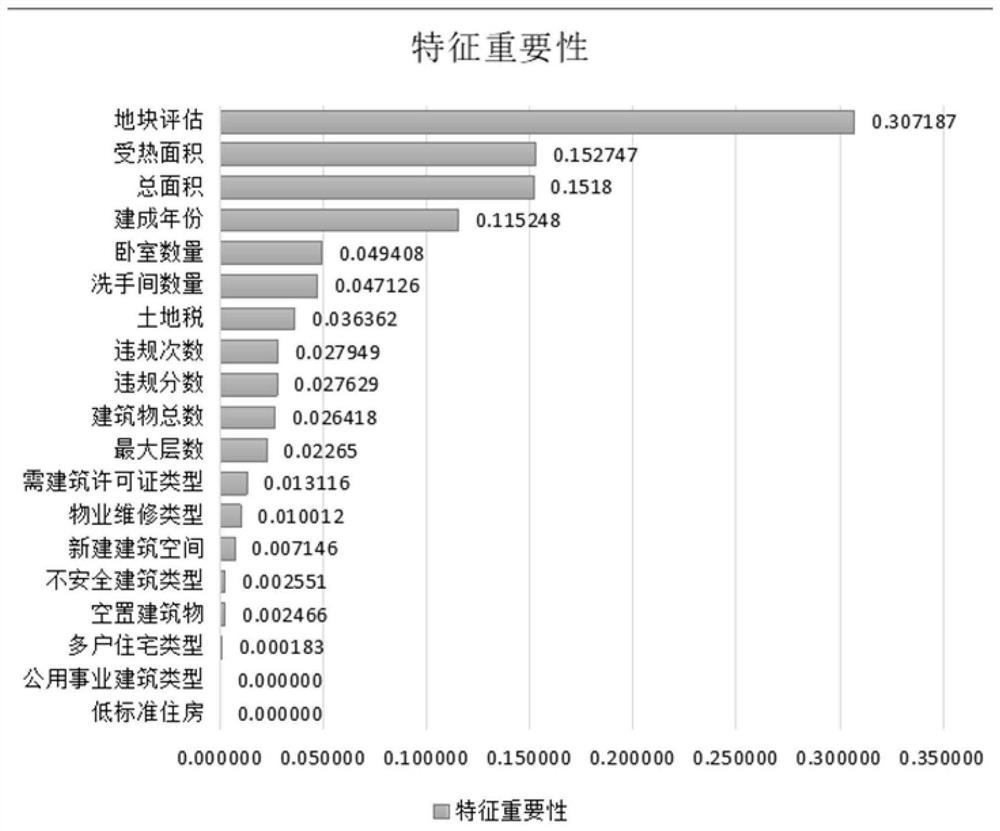Method for constructing commercial area building fire risk prediction grade model
A technology of risk prediction and fire, which is applied in the field of level models, can solve problems such as large-area smoke filling and three-dimensional combustion, large fire load, and complex functions, and achieve the effects of saving manpower and material resources, reducing fires, and improving fire inspection efficiency
- Summary
- Abstract
- Description
- Claims
- Application Information
AI Technical Summary
Problems solved by technology
Method used
Image
Examples
Embodiment 1
[0042] Such as Figure 1 to Figure 4 As shown, a method for constructing a building fire risk prediction level model in a commercial area includes the following steps:
[0043] S1: Acquire fire history data, process fire history data, analyze fire history data and filter out fire features for model training, generate fire feature data sets from fire history data according to fire features, and fire feature data The set is divided into training set and test set;
[0044] S2: Construct a building fire risk prediction level model in commercial areas based on the training set based on the random forest machine learning algorithm;
[0045] S3: Calculate the importance of each fire feature and adjust the building fire risk prediction rating model for commercial areas accordingly;
[0046] S4: Input the test set into the building fire risk prediction level model in commercial areas to obtain the fire risk prediction level, and evaluate the building fire risk prediction level model ...
PUM
 Login to View More
Login to View More Abstract
Description
Claims
Application Information
 Login to View More
Login to View More - R&D
- Intellectual Property
- Life Sciences
- Materials
- Tech Scout
- Unparalleled Data Quality
- Higher Quality Content
- 60% Fewer Hallucinations
Browse by: Latest US Patents, China's latest patents, Technical Efficacy Thesaurus, Application Domain, Technology Topic, Popular Technical Reports.
© 2025 PatSnap. All rights reserved.Legal|Privacy policy|Modern Slavery Act Transparency Statement|Sitemap|About US| Contact US: help@patsnap.com



